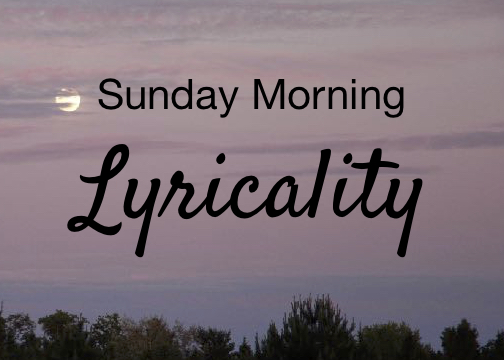Welcome to Sunday Morning Lyricality, featuring a weekly song or poem by a Minnesota writer. Kelly Travis is our guest editor
for December—the month of Hanukah, Kwanza, the winter Solstice, and Christmas, the season of candles and lights, and the darkest month of the year. Darkness is sometimes associated with evil, but good, even necessary things happen in the dark. Seeds germinate underground. Night allows us to see stars and moon, makes candlelight inviting, and nudges us into restorative sleep. The womb is dark. Poetry questions our assumptions and biases, urges us to accept complexity. And so this month’s poems invite us to live with and honor the dark, those places of uncomfortable encounter with helplessness and fear, pain and sorrow, grief and rage. Without darkness, renewal doesn’t happen, and concepts like light and hope lose their meaning.
If you have never heard a poem without reading it aloud, then let me introduce you to Douglas Kearney’s poetry in his book Patter. Kearney delivers performative, typographical poems that remind me of the 1980’s American neo-conceptual artist Jenny Holzer (man, if these two could meet and do a project…). Jenny Holzer brought word art to the streets and Douglas Kearney brought a bit of street art to poetry. Inside Kearney’s book, Patter, poetry exists not only as words but as a visual medium in the form of street art, a screenplay, a wordfind and a sonnet interrupted by graffiti. On the surface, his poems are pleasing to the reader’s eye: they are deep and compact, yet lively. There are so many layers in Kearney’s poems; each unwinds a narrative in an overlying structure of wordplay and some with graphics.
Douglas Kearney, I am glad you became a part of my poetry intake.
Lyricality readers, test these waters.
Kelly Travis
The Miscarriage: A Silent Film
Douglas Kearney
to be shot without color
TITLE CARD
“Peril at Red River!”
EXT. RED RIVER 4:30 a.m.
MEDIUM SHOT
BABY in hamper rushing downriver to edge-of-frame.
EFFECTS NOTE
for BABY use sheets, wadded.
TRACKING SHOT
CAR racing the riverside.
INT. CAR
a WIFE and HUSBAND
HUSBAND driving after BABY.
WIFE cradling her belly.
TITLE CARD
“Will They Make It in Time?”
EXT. 4:35 a.m.
LONG SHOT
waterfall, riverbed.
***
Douglas Kearney has published six books, most recently, Buck Studies (Fence Books, 2016), winner of the Theodore Roethke Memorial Poetry Award, the CLMP Firecracker Award for Poetry and silver medalist for the California Book Award (Poetry). BOMB says: “[Buck Studies] remaps the 20th century in a project that is both lyrical and epic, personal and historical.” M. NourbeSe Philip calls Kearney’s collection of libretti, Someone Took They Tongues. (Subito, 2016), “a seismic, polyphonic mash-up that disturbs the tongue.”Kearney’s collection of writing on poetics and performativity, Mess and Mess and (Noemi Press, 2015), was a Small Press Distribution Handpicked Selection that Publisher’s Weekly called “an extraordinary book.” Starts Spinning (Rain Taxi), a chapbook of poetry, saw publication in 2019. His work is widely anthologized, including Best American Poetry (2014, 2015), Best American Experimental Writing (2014), The Creative Critic: Writing As/About Practice, What I Say: Innovative Poetry by Black Writers in America, and The BreakBeat Poets: New American Poetry in the Age of Hip-Hop. He is also widely published in magazines and journals, including Poetry, Callaloo, Boston Review, Hyperallergic, Jacket2, and Lana Turner. His work has been exhibited at the American Jazz Museum, Temple Contemporary, Los Angeles Contemporary Exhibitions, and The Visitor’s Welcome Center (Los Angeles).A librettist, Kearney has had four operas staged, most recently Sweet Land, which received rave reviews from The LA Times, The NY Times, The Wall Street Journal, and The LA Weekly. He has received a Whiting Writer’s Award, a Foundation for Contemporary Arts Cy Twombly Award for Poetry, residencies/fellowships from Cave Canem, The Rauschenberg Foundation, and others. A Howard University and CalArts alum, Kearney teaches Creative Writing at the University of Minnesota–Twin Cities. Born in Brooklyn, raised in Altadena, CA, he lives with his family in St. Paul.
“The Miscarriage: A Silent Film” by Douglas Kearney is from Patter (Red Hen Press, 2014). Reprinted with permission from the publisher.
